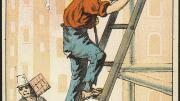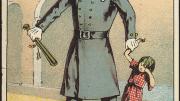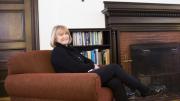The ancestors of most Bostonians may have hailed from Ireland and Italy, but the current top two immigrant groups are from China and the Dominican Republic, according to City of Neighborhoods: The Changing Face of Boston, an exhibit at the Boston Public Library through August 22. Overall, about 27 percent of city residents were born abroad, a quarter of them in Asia. Nearly half of East Boston’s inhabitants are foreign-born, the majority from Latin and South America. Boston also has the third-largest Haitian population in the country (after New York City and Florida), and a growing Cape Verdean community. These dramatic trends are illustrated through maps, U.S. Census data, photographs, and drawings that make clear that this ever-changing population influences the city’s physical landscapes and culture in countless ways—and always has.
Boston's immigration trends on exhibit at Boston Public Library
Boston's immigration trends on exhibit at Boston Public Library
A Boston Public Library exhibit illustrates immigration history.


You might also like
Mount Vernon, Historic Preservation, and American Politics
Anne Neal Petri promotes George Washington and historic literacy.
England’s First Sports Megastar
A collection of illustrations capture a boxer’s triumphant moment.
Creepy Crawlies and Sticky Murder Weapons at Harvard
In the shadows of Singapore’s forests, an ancient predator lies in wait—the velvet worm.
Most popular
Explore More From Current Issue

Mount Vernon, Historic Preservation, and American Politics
Anne Neal Petri promotes George Washington and historic literacy.

The 1884 Cannibalism-at-Sea Case That Still Has Harvard Talking
The Queen v. Dudley and Stephens changed the course of legal history. Here’s why it’s been fodder for countless classroom debates.

Getting to Mars (for Real)
Humans have been dreaming of living on the Red Planet for decades. Harvard researchers are on the case.



